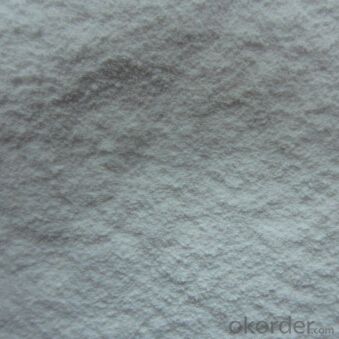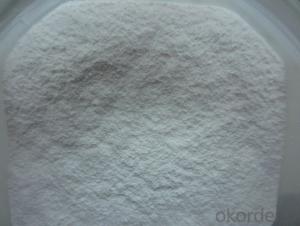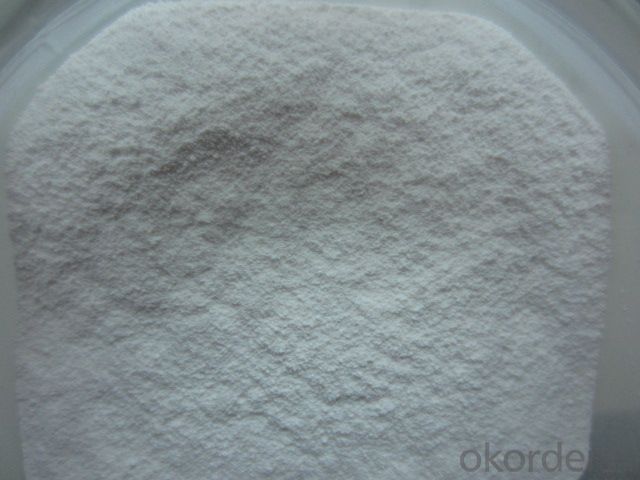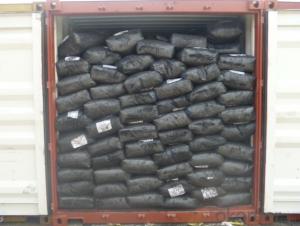Plastic Impact Modifier to Improve Plastic and Rubber Products (A C R)
- Loading Port:
- Qingdao
- Payment Terms:
- TT or LC
- Min Order Qty:
- 2000 kg
- Supply Capability:
- 100000 kg/month
OKorder Service Pledge
OKorder Financial Service
You Might Also Like
1. Structure of Plastic Impact Modifier Description
Classification: Chemical Auxiliary Agent
Other Names: one pack pvc stabilizer
Purity: 99.9%
Place of Origin: Shandong, China (Mainland)
Type: PVC Stabilizer
Usage: Plastic Auxiliary Agents
Brand Name: HaoMing
Model Number: Pipe Grade
2. Main Features of Plastic Impact Modifier
Product | PVC stabilizer, Also called One pack pvc stabilizer
|
Description | It is lead based compound stabilizer containing internal and external lubricants. It is used for producing pvc pipes. It has excellent processing performance for calendaring molding. It will not effect the flatness, bright and clean, even thickness of the product when the filling material has a fluctuation.
|
Specification | 1. Appearance: white flake 2. Lead oxide content,%: 30-40 3. Melting Point:70min 4. Moisture,%:0.5max
|
Addition quantity | According to the different equipments of calendars, suggests add 3-4 phr in each 100 phr PVC resin.
|
Suggested Formula | PVC resin:100kg, PVC stabilizer: 3-4kg, Stearic acid: 0.3-0.6kg, PE wax: 0.6-0.8kg, CPE135A: 2-3kg, Titanium dioxide:1-1.5kg, Optical brihtener OB-1: 20g, Caclium carbenate: 30-50kg |
3. Images


4.Plastic Impact Modifier Specifications
1. Appearance: white flake
2. Lead oxide content,%: 30-40
3. Melting Point:70min
4. Moisture,%:0.5max
5.FAQ of Plastic Impact Modifier
1.Delivery date:30days
2.Proper for plastic pipe and profile stablizer
3.Payment:30% in advance,70% against BL copy
- Q: What are the pharmaceutical manufacturing companies now using PT / AL_203 catalysts?
- Yueyang Eagle Hill Petrochemical Plant
- Q: Chemistry GCSE what is a catalyst?
- If you just need the GCSE version (it gets far more complicated at A Level, you have to learn about activation energy and all this other crap) then it's just a substance that speeds up a reaction and allows it to happen quicker. but! The catalyst itself also remains unchanged at the end of the reaction (for reasons you probably don't need to know until A Level.) Remember that.
- Q: describe a biological catalyst?
- Enzyme are biological catalyst, proteinous in nature, formed in animal's body by exocrine cell, present in inactive form, generally ends with suffix ase e.g enterikinase with exceptions pepsin, specific in nature not only speed up biological reactions but also lower down the reactions inside the body.
- Q: What is the chemical nature of the enzyme?
- Enzyme is an amphoteric electrolyte, soluble in water, easy to precipitate at the isoelectric point, the enzyme activity-pH curve and the zwitterion of the enzyme. The enzyme is a high-molecular colloidal material, generally can not pass through the semipermeable membrane; Dissociation curve similar to the enzyme in the electric field can be the same as other proteins swimming; ③ lead to protein denaturation factors, such as ultraviolet, heat, surfactant, heavy metals, protein precipitants, etc., can make the enzyme failure; Protease hydrolysis and loss of activity.In addition, the most direct evidence is that all has been highly purified and crystallized enzyme for a primary structure analysis, the results indicate that the enzyme is a protein.
- Q: What is the catalyst in the end?
- You said the chemical catalyst or Ati graphics card catalyst? If the above is enough to explain the above, if it is the latter, that is, the meaning of the graphics card, Ati's graphics drive like a catalyst
- Q: the heterogenous catalyst ZSM-5 IS used to convert ?
- Zeolite-based heterogeneous catalysts are used by industrial chemical companies in the interconversion of hydrocarbons and the alkylation of aromatic compounds. A very good example is the zeolite ZSM-5. This zeolite, developed by Mobil Oil, is an aluminosilicate zeolite with a high silica and low alumininum content. Its structure is based on channels with insecting tunnels. The aluminium sites are very acidic. The substitution of Al3+in place of the tetrahedral Si4+ silca requires the presence of an added postive charge. When this is H+, the acidity of the zeolite is very high. The reaction and catalysis chemistry of the ZSM-5 is due to this acidity. The ZSM-5 zeolite catalyst is used in the petroleum industry for hydrocarbon interconversion. An example use is in the isomerizations of xylene- from meta to para-xylene. The acidic zeolite promotes carbocation isomerizations. There are two suggested mechanisms for this type of isomerizations. Firstly shape may play a role. Perhaps para-xylene has a shape which allows it to diffuse rapidly through the zeolite structure, whereas as meta-xylene takes longer to pass through the zeolite and thus has more opportunity to be converted into the para-xylene. Secondly, is that the orientation of reactive intermediates within the zeolite channels favors specifically para-xylene.
- Q: When you write a chemical equation, how do you want to add "catalyst" and "?" When you do not have to write?
- This is the need for your memory, write a few times, will naturally cooked
- Q: Manganese dioxide can be used as a catalyst for various chemical reactions
- MnO2 + 4HCl = heating = MnCl2 + Cl2 + 2HCl
- Q: give an example of how a catalysts speeds up the rate of reaction?? thank you!!?
- Catalysts speed up a reaction, but at the end of it, it's chemically unchanged. You usually have the same mass at the end of the reaction. For example.. Consider the decomposition of Hydrogen Peroxide: 2H2O2 -2H2O + O2 I hope you got how to represent it =D So.. This reaction is very slow. You can try it out in the lab. So when we add a catalyst, the reaction speeds up. The catalyst used here is MnO2.. Manganese dioxide. Well.. The Enzymes in our body are also Catalysts. They speed up the Biological Reactions taking place inside out body. I hope this answers your question. :) Cheers
- Q: how do catalysts help in green chemistry?
- Catalysts allow more efficient conversion of products in irreversible reactions, or they allow for the faster attainment of equilibrium in equilibrium reactions, thereby reducing time, raw material waste and emissions. Also, because catalysts are reusable, they can be recycled.
Send your message to us
Plastic Impact Modifier to Improve Plastic and Rubber Products (A C R)
- Loading Port:
- Qingdao
- Payment Terms:
- TT or LC
- Min Order Qty:
- 2000 kg
- Supply Capability:
- 100000 kg/month
OKorder Service Pledge
OKorder Financial Service
Similar products
Hot products
Hot Searches





















